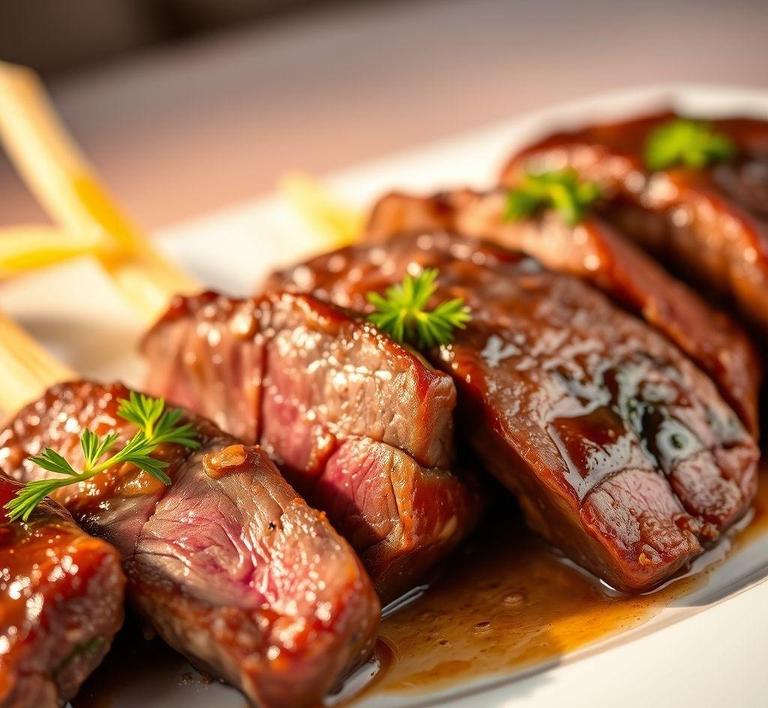If you’re wondering whether it’s safe to refreeze stew meat, you’re not alone! Many home cooks find themselves with leftover meat after making a hearty stew or other dish and want to preserve it for later. Refreezing stew meat is generally okay, but there are a few important things to keep in mind to ensure your meat stays safe and tasty. This guide will walk you through everything you need to know, from the right way to store it, to tips for keeping it at its best once it’s been thawed and refrozen. Let’s dive into the ins and outs of refreezing stew meat and get you set up for success in the kitchen!
Can You Refreeze Stew Meat?

When it comes to food safety and quality, the question of whether you can refreeze stew meat is more common than you might think. The general answer is yes, you can refreeze stew meat, but the key to making sure that it remains safe and maintains its best possible taste lies in the conditions under which it’s frozen and thawed.
The Safety Factor
As long as the stew meat has been thawed properly in the refrigerator and hasn’t sat at room temperature for extended periods (usually over 2 hours), it’s generally safe to refreeze. The USDA’s guidelines recommend this method to prevent the growth of harmful bacteria. The important thing here is to handle the meat correctly during the thawing process. If stew meat has been defrosted using quick methods like a microwave or running water, it should be cooked immediately and not refrozen.
The process of freezing and thawing meat impacts the texture and moisture levels, and while the meat might be safe to refreeze under proper conditions, its quality could diminish. As long as you stick to safe practices, refreezing stew meat won’t pose a risk to your health.
Freezing and Thawing Cycles
When you refreeze stew meat, it is essential to understand that each freeze-thaw cycle causes the cells within the meat to break down further. The initial freeze captures the moisture within the meat, but each subsequent freeze-thaw cycle causes some of that moisture to escape. The result can be a meat that’s tougher and drier than it was originally.
How To Refreeze Stew Meat?
Refreezing stew meat requires careful attention to both time and temperature. To maintain the meat’s safety and quality, follow these simple steps:
-
Thawing the Stew Meat
The first step is to make sure you thaw the stew meat properly. Ideally, you should let it thaw in the refrigerator over the course of several hours or overnight. This gradual thawing keeps the meat at a safe temperature (below 40°F or 4°C), reducing the risk of bacteria growth. If you’ve defrosted the meat using quicker methods like the microwave or cold water, you’ll need to cook it right away if you want to avoid compromising safety and quality.
-
Cook Before Refreezing (Optional)
It’s a good practice to cook stew meat after you’ve thawed it, especially if it’s already been frozen once. Cooking before refreezing helps lock in moisture and ensures you’re getting the best flavor and texture possible. If you prefer to refreeze raw meat, be sure that it’s done properly and doesn’t sit out too long at room temperature.
-
Prepare for Refreezing
To refreeze stew meat successfully, you should wrap it well. Use a vacuum sealer or airtight bags to minimize exposure to air, which can cause freezer burn. If you’re using regular freezer bags, make sure you remove as much air as possible before sealing. A good tip is to lay the meat flat in the bag to allow for even freezing, as well as easier defrosting in the future.
-
Label and Date
Label the bags or containers with the date you are refreezing the meat. This will help you track how long it’s been in the freezer, so you know when it should be used. Freezing meat for extended periods doesn’t make it unsafe, but the longer it stays in the freezer, the greater the risk of quality loss. As a general rule, stew meat should be consumed within 3-4 months after refreezing.
-
Freezing Process
Place the wrapped stew meat in the coldest part of your freezer. Ensure the temperature is at or below 0°F (-18°C) to keep the meat safe. The meat should freeze within a few hours, which helps maintain its texture. Once frozen, it can be stored until you’re ready to thaw it again.
Quality Impact
While you can refreeze stew meat safely, there’s an undeniable impact on its quality. Freezing meat is one of the most effective ways to preserve it, but each freeze-thaw cycle causes moisture loss, leading to changes in texture and flavor.
-
Texture
Stew meat, which often comes from tougher cuts like chuck or round, relies on slow cooking to break down the connective tissue and become tender. Freezing and thawing meat repeatedly can cause the muscle fibers to stiffen and become drier, resulting in a tougher bite when the meat is cooked again. The meat may also lose its juiciness, making the stew less rich and flavorful.
-
Flavor
Another quality factor is flavor. While refreezing stew meat won’t make it dangerous to eat, it could impact the flavor. The moisture lost during freezing and thawing may result in a slightly less flavorful dish. This is particularly noticeable in stews where the meat is the main flavor contributor. Refrozen meat may not absorb flavors as well as fresh meat, and the stew could taste a little more bland.
-
Freezer Burn
Freezer burn occurs when air comes into contact with the meat, causing dehydration and oxidation. This leads to a dry, tough texture and off flavors. If the stew meat is improperly wrapped or stored, freezer burn can set in, further reducing the quality of the stew.
-
Nutritional Content
While the nutritional content of refrozen stew meat does not significantly change, the texture and flavor degradation can make it feel less satisfying. The more moisture a piece of meat loses, the less tender and juicy it becomes, which can affect the overall eating experience.
So, can you refreeze stew meat? Yes, but with caution. While it’s safe to do so as long as proper thawing techniques are followed, the overall quality of the meat will decline with each freeze-thaw cycle. Refreezing stew meat can result in a tougher, drier, and less flavorful end product, so it’s advisable to cook it first before refreezing if you want to lock in moisture and flavor. If you find yourself needing to refreeze, use airtight wrapping, label the meat properly, and consume it within a reasonable amount of time (ideally within 3 to 4 months) to ensure the best results.
The bottom line: while refreezing stew meat isn’t a deal-breaker, it’s not without its drawbacks. If you want to preserve the meat’s texture, flavor, and juiciness as much as possible, it’s best to limit the number of times it’s frozen and thawed.
Is It Safe To Refreeze Stew Meat?
Refreezing stew meat is a topic that often sparks confusion and concern, particularly when it comes to food safety. The good news is that, in certain conditions, it can be safe to refreeze stew meat. However, it requires following some important guidelines to ensure that the meat remains both safe and tasty after being thawed and refrozen.
The primary risk when refreezing stew meat-or any meat, for that matter-stems from bacterial growth. When meat is thawed, it enters a "danger zone" where bacteria can proliferate rapidly, especially at temperatures between 40°F and 140°F (4°C to 60°C). This is why the process of refreezing needs to be handled with caution.
Can You Refreeze Stew Meat Safely?
Here’s how to determine whether it’s safe to refreeze stew meat:
- Proper Thawing Method: If stew meat was thawed in the refrigerator (and not at room temperature), it can generally be refrozen. Thawing it slowly at a controlled temperature ensures that bacteria haven’t had the chance to multiply.
- Time Constraints: If the stew meat has been sitting in the refrigerator for more than two days after being thawed, it’s best not to refreeze it. Bacteria may have already started to grow, and freezing them again won’t eliminate the risk.
- Refreezing after Cooking: If you’ve already cooked the stew meat and then decide to freeze leftovers, it’s safe to do so, provided that the stew was cooled properly before freezing. Cooking kills many bacteria, so refreezing cooked stew meat is less risky than raw meat.
Signs That Stew Meat Should Not Be Refrozen
While refreezing stew meat is sometimes okay, there are instances where it’s simply not worth the risk. Understanding the signs that stew meat has gone bad can prevent you from making potentially harmful mistakes.
- Off Smell: One of the most obvious signs that stew meat shouldn’t be refrozen is an off or sour odor. If the meat smells rancid, or if the odor is distinctly unpleasant, it’s a clear indication that bacteria or spoilage microorganisms have set in. Spoiled meat can cause food poisoning, so it’s best to discard it.
- Discoloration: Fresh stew meat should be bright red or pinkish. If the meat has started to turn brownish, gray, or green, it could be a sign of oxidation or bacterial growth. While discoloration doesn’t always indicate spoilage, it’s a red flag worth considering, especially if combined with other signs like an off odor.
- Slimy Texture: If the meat feels slimy or sticky to the touch after thawing, this is a classic sign of bacterial growth. Meat can develop a sticky film when the bacteria start breaking down the proteins. Slimy meat should be immediately discarded.
- Excessive Ice Crystals: When stew meat is refrozen, it may form ice crystals. However, if the meat is excessively coated in ice, it could indicate that it has been thawed and refrozen more than once, which compromises its quality and safety.
- Expiration Date: Always check the sell-by date or use-by date on packaging. If the stew meat is past its date, it’s best to avoid refreezing, as it could already be close to spoiling.
Common Refreezing Mistakes
When it comes to refreezing stew meat, there are several common mistakes that can make the process unsafe or negatively impact the quality of the meat.
- Thawing at Room Temperature: Thawing stew meat on the countertop at room temperature might seem like a convenient method, but it’s highly risky. When meat is left out for extended periods, it enters the temperature danger zone and bacteria multiply rapidly. Always thaw meat in the refrigerator or use a microwave or cold water method if you’re short on time.
- Repeated Refreezing: Refreezing stew meat multiple times is one of the biggest mistakes people make. Each time meat is frozen and thawed, its texture and flavor degrade. It also increases the risk of bacterial contamination. Ideally, meat should only be thawed once. If you plan on using it over several meals, divide it into smaller portions before freezing.
- Improper Storage: Storing stew meat in an air-tight or poorly wrapped package can lead to freezer burn, which not only affects the taste and texture but also reduces the quality of the meat. Use vacuum sealing or heavy-duty freezer bags to keep air out and moisture in. This prevents the stew meat from drying out and becoming less palatable when refrozen.
- Refreezing Large Portions: It’s tempting to freeze large cuts of stew meat, but this can slow down the freezing process and lead to uneven freezing. If you plan on refreezing stew meat, cut it into smaller portions. This allows it to freeze more quickly, which helps preserve its texture and prevents bacterial growth.
- Not Cooking Before Freezing: If you plan on refreezing stew meat, cooking it first can often be a better option. The cooking process kills harmful bacteria, and cooked meat can be safely refrozen after it’s cooled down. However, avoid refreezing meat that has been sitting out at room temperature for more than two hours before cooking.
Tips And Tricks
If you’re determined to refreeze stew meat, or if it’s something you do regularly, there are a few tips and tricks that can help you do it safely and preserve the quality of the meat:
- Cool Stew Meat Properly Before Freezing: When you cook stew meat, it’s crucial to allow it to cool to room temperature before placing it in the freezer. If you put hot stew meat directly into the freezer, it can cause uneven freezing and lead to moisture loss. Cooling it quickly by spreading it out on a tray can also prevent the formation of large ice crystals.
- Label Everything: Always label your packages with the date and contents so you can keep track of how long the stew meat has been frozen. You don’t want to accidentally refreeze meat that’s been in the freezer for too long.
- Use Airtight Containers: For best results, use vacuum-sealed bags or airtight freezer containers. This will not only help preserve the flavor and texture of the stew meat but will also minimize the risk of freezer burn.
- Use the Right Thawing Method: When you’re ready to thaw your stew meat, do it slowly in the refrigerator or use a microwave’s defrost setting. Thawing meat at room temperature encourages bacterial growth and should be avoided.
- Refreeze Cooked Meat: If you have leftover cooked stew meat, it’s much safer to refreeze it rather than raw meat. The cooking process kills most bacteria, lowering the risks involved with refreezing.
Conclusion
Refreezing stew meat is possible, but it comes with its challenges and risks. If done correctly, such as by thawing meat in the fridge, using airtight packaging, and avoiding multiple cycles of freezing and thawing, it can be a safe way to preserve your stew meat. However, paying attention to signs of spoilage like off smells, discoloration, or slimy texture is crucial. By following food safety practices and understanding the risks, you can enjoy the convenience of refrozen stew meat without compromising your health.


